The Sunder Foundation Awards 2023

The Sunder Foundation Awards 2023 The Sunder Foundation & The World Brain Mapping Foundation are collaborating to support SBMT’s Global Physicians and Scientists (GPS) to bring the best science, technology, and innovation to individuals in rural areas and war zones. This year, at the 20th Annual SBMT World Congress, there will be close to 900 presenters covering a wide array of topics including Neuroscience & Psychiatry. At the conference, the 2023 Sunder Foundation Rukmini Rajagopal Medal and the WBMF Humanitarian award will be presented to two Ukrainian Doctors, Oleksandra Kashurina and Kateryna Potapova, and an Italian Neurosurgeon, Dr. Giuseppe Umana. They have saved many injured Ukrainians and a NATO soldier as part of the WBMF-SBMT Global Physicians and Scientists (GPS) humanitarian program. Learn more about these awards and awardees as we appreciate and honor the contributions of these trailblazing colleagues at the 20th Annual “Gathering for Cure” Black Tie Awards Gala on the 17th of February 2023 at the InterContinental Hotel, LA. Read about the event, and join us from February 16th – February 19th for an enriching experience!
WBMF: JPL’s Electronic Nose May Provide Neurosurgeons with A New Weapon Against Brain Cancer
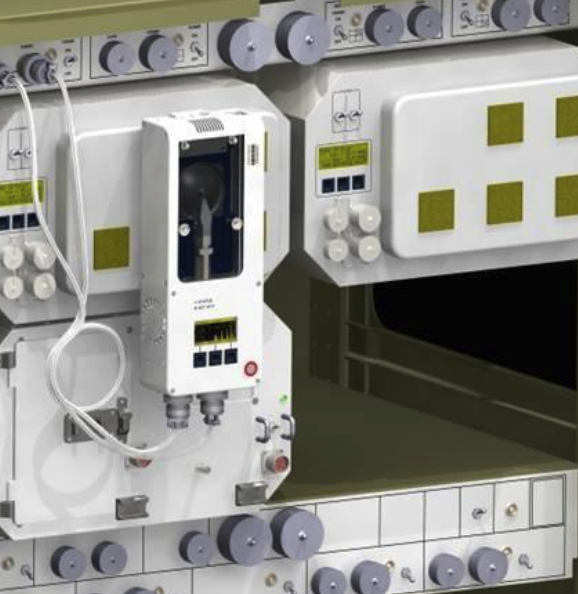
The JPL Electronic Nose (ENose) is a full-time, continuously operating event monitor designed to detect air contamination from spills and leaks in the crew habitat in the International Space Station. It fills the long-standing gap between onboard alarms and complex analytical instruments. ENose provides rapid, early identification and quantification of atmospheric changes caused by chemical species to which it has been trained. ENose can also be used to monitor cleanup processes after a leak or a spill. Experiment Description RESEARCH OVERVIEW DESCRIPTION The JPL Electronic Nose (ENose) is an array-based sensing system which contains 32 conductometric sensors. The Second Generation ENose was trained to detect, identify and quantify 21 chemical species, the majority of which are organic solvents or commonly used organic compounds, which might be released through a leak or a spill in a spacecraft crew cabin. It was extensively ground-tested, and includes data analysis software which will identify and quantify the release of a target chemical within 40 minutes of detection. Past ENose investigations have focused on organic compounds such as common solvents and a few selected inorganic compounds, ammonia, water and hydrazine. For the new ENose to be performed on the ISS, two inorganic species have now been added to the analyte set, mercury and sulfur dioxide. To accommodate these inorganic species, the sensor array will incorporate a hybrid sensor approach, including both new sensing materials and new sensing platforms made up of microhotplate sensor substrates. Materials approaches to these analytes have been determined using models of sensor-analyte response developed under this program. Predictive models will also be used to complement array training for additional software analyses including chemical family identification and identification of unknown analytes. Analysis of data taken by the sensor array will be included on the ENose control computer, and event analysis will be available within 40 minutes of event onset. The ENose event monitor, by identifying and quantifying trained-for chemical species, fills the gap between an alarm (which provides no ID or quantification) and high-end analytical instruments. ENose has demonstrated a wide dynamic range, ranging from fractional ppm to 10,000 ppm. Its array based sensing mechanism means that it can be trained to detect new chemical species, and training data can be uplinked to add new species to its on-board data library. ENose runs continuously (30 to 360 data points/hr) and autonomously; it requires only minimal crew interaction and requires no consumables. The ENose is low mass (less than 4 kg), small volume (less than 4 liters) and low power (less than 20 W), in addition to being microgravity-insensitive, robust, and rugged. It is capable of analyzing volatile aerosols as well as vapors. Future applications of the JPL ENose may also include environments other than the spacecraft crew cabin and similar enclosed environments. Such applications may include integration with larger devices such as analytical instruments, and with environmental monitoring and control systems. back to top Applications SPACE APPLICATIONS The JPL ENose is envisioned to be one part of a distributed system for automated monitoring and control of the breathing atmosphere in inhabited spacecraft in microgravity. It is designed as an event or incident monitor, capable of providing rapid, early identification and quantification of changes in the atmosphere caused by leaks or spills of compounds to which the device has been trained. The flexibility of the device includes the ability to be trained to new compounds, the possibility of providing sensor sets for particular analyte suites, and a wide dynamic range (fractional ppm to 10,000 ppm), making it a valuable part of an air quality monitoring and control system that is comprised of several types of instruments. Such a system can be included in an environmental control system which actuates remediation of anomalous events. EARTH APPLICATIONS Many important and diverse Earth-based applications exist for ENose technology. One major driver is the current need for advanced detection devices for security (both civilian and military) and health safety applications, such as the detection of explosives and infection monitoring. back to top Operations OPERATIONAL REQUIREMENTS AND PROTOCOLS Upon arrival on board ISS, ENose will be unpacked from stowage and set up by a crewmember. ENose will be affixed to an EXPRESS Rack for power. ENose will run continuously for minimum of six months; data will be transferred to ground in Health and Status packets and in periodic file transfer. Data will also be archived in ENose until file transfer (up to 30 days). The crewmembers will perform periodic confirmational events to collect air samples in vicinity of ENose for analysis on ground. ISS crewmembers will retrieve the ENose from stowage and install it on an EXPRESS Rack with a bracket assembly and/or Velcro; connect the power cable and the data cable. ENose will be powered on and the crewmember will verify the following: LED illumination; display operation; clear air inlet and outlets. ENose is autonomous with possible occasional crew commanding and periodic status checks (once or twice per month). Crewmembers will have periodic attended events if ENose detects a potential spill or leak. When ENose is relocated, the crewmember will need to reset the IP address. RESULTS PUBLICATIONS Copy citations FLIGHT PREPARATION RESULTS PUBLICATIONS
WBMF: X Marks the Spot
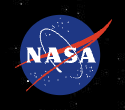
Some maps can guide you home. Others point to buried treasure. Researchers hope one in particular could help prolong our lives. This map precisely pinpoints brain tumors and is part of a current research study jointly conducted by NASA’s Jet Propulsion Laboratory in Pasadena, California and Keck School of Medicine at the University of Southern California. Using an infrared camera and software NASA developed to analyze rocks on Mars, doctors at Keck are testing the duo to see how accurately they can detect and outline brain tumors. At the moment, neurosurgeons use microscopes to find the boundaries of tumors and remove them. As good as the technique is, it can be hard to tell healthy tissue from tumor cells. “Brain tumor tissue looks the same as healthy tissue on the edges,” said Dr. Babak Kateb, lead scientist for the project. That means there’s still a chance of cutting out healthy brain tissue or leaving cancerous cells behind. However, if the new system proves to be as good as researchers hope it is, doctors could have a powerful tool for navigating the brain’s delicate terrain. The secret to the new technology is the infrared camera’s ability to see slight differences in heat. “The camera’s precision allows it to map temperature differences of one-hundredth of a degree,” said Dr. Sarath Gunapala, JPL lead engineer for the camera. Tumor cells emit more heat than healthy brain cells. With the infrared camera’s extraordinary ability to detect small temperature changes, it may be able to distinguish healthy cells from tumor cells. The computer software would then process the images to create a map of the brain that precisely plots the tumor locations. Image to left: JPL’s new ultra-sensitive infrared camera can sense extremely slight differences in temperatures. Researchers suspect the camera may be able to do the same in brain cells. Credit: NASA Using this map as a guide, researchers believe surgeons could see exactly where to make their incisions and have better success in cleanly removing the entire tumor without damaging the patient’s healthy brain tissue. If the software-camera mapping combination is successful, the incredible tool will not only be a giant leap for brain neurosurgery, but it may help patients survive longer and live better. Charlie PlainNASA’s John F. Kennedy Space Center
WBMF: JPL Nanotubes Help Advance Brain Tumor Research
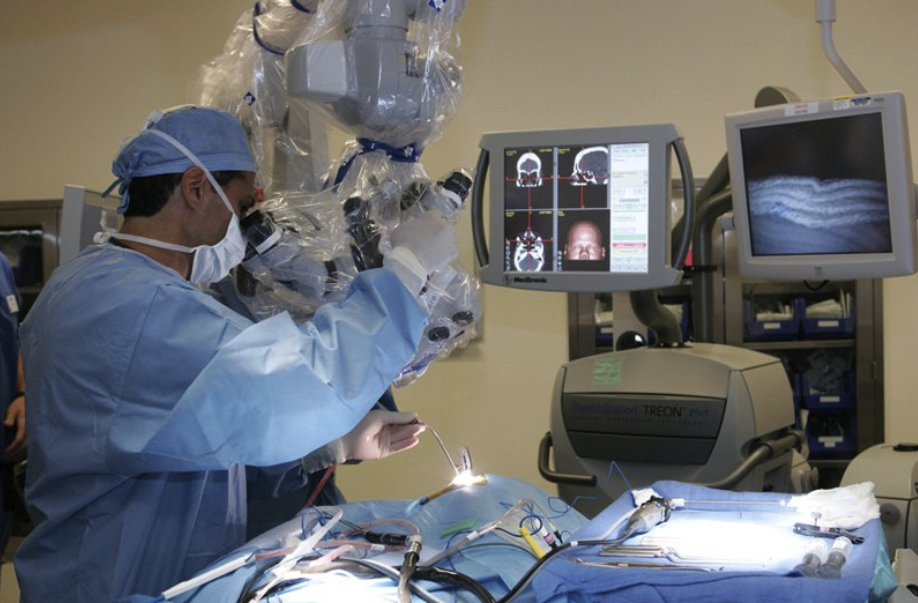
PASADENA, Calif.- The potential of carbon nanotubes to diagnose and treat brain tumors is being explored through a partnership between NASA’s Jet Propulsion Laboratory, Pasadena, Calif., and City of Hope, a leading cancer research and treatment center in Duarte, Calif. PASADENA, Calif.- The potential of carbon nanotubes to diagnose and treat brain tumors is being explored through a partnership between NASA’s Jet Propulsion Laboratory, Pasadena, Calif., and City of Hope, a leading cancer research and treatment center in Duarte, Calif. Nanotechnology may help revolutionize medicine in the future with its promise to play a role in selective cancer therapy. City of Hope researchers hope to boost the brain’s own immune response against tumors by delivering cancer-fighting agents via nanotubes. A nanotube is about 50,000 times narrower than a human hair, but it length can extend up to several centimeters. If nanotube technology can be effectively applied to brain tumors, it might also be used to treat stroke, trauma, neurodegenerative disorders and other disease processes in the brain, said Dr. Behnam Badie, City of Hope’s director of neurosurgery and of its brain tumor program. “I’m very optimistic of how this nanotechnology will work out,” he said. “We are hoping to begin testing in humans in about five years, and we have ideas about where to go next.” The Nano and Micro Systems Group at JPL, which has been researching nanotubes since about 2000, creates these tiny, cylindrical multi-walled carbon tubes for City of Hope. City of Hope researchers, who began their quest in 2006, found good results: The nanotubes, which they used on mice, were non-toxic in brain cells, did not change cell reproduction and were capable of carrying DNA and siRNA, two types of molecules that encode genetic information. JPL’s Nano and Micro Systems Group grows the nanotubes on silicon strips a few square millimeters in area. The growth process forms them into hollow tubes as if by rolling sheets of graphite-like carbon. Carbon nanotubes are extremely strong, flexible, heat-resistant, and have very sharp tips. Consequently, JPL uses nanotubes as field-emission cathodes — vehicles that help produce electrons — for various space applications such as x-ray and mass spectroscopy instruments, vacuum microelectronics and high-frequency communications. “Nanotubes are important for miniaturizing spectroscopic instruments for space applications, developing extreme environment electronics, as well as for remote sensing,” said Harish Manohara, the technical group supervisor for JPL’s Nano and Micro Systems Group. Nanotubes are a fairly new innovation, so they are not yet routinely used in current NASA missions, he added. However, they may be used in gas-analysis or mineralogical instruments for future missions to Mars, Venus and the Jupiter system. JPL’s collaboration with City of Hope began last year, after Manohara, Badie and Dr. Babak Kateb, City of Hope’s former director of research and development in the brain tumor program, discussed using nanostructures to better diagnose and treat brain cancer. Badie said his team’s nanomedical research continues, and the next goal will be to functionalize and attach inhibitory RNA to the nanotubes and deliver it to specific areas of the brain. The JPL and City of Hope teams published the results of the study earlier this year in the journal NeuroImage. Badie says that JPL’s contribution to City of Hope’s nanomedicine research has been invaluable. “The fact that we can get pristine and really clean nanotubes from Manohara’s department is unique,” he said. “The fact that we are both collaborating for biological purposes is also really unique.” The collaboration between JPL and City of Hope is conducted under NASA’s Innovative Partnership Program, designed to bring benefits of the space program to the public. For more information about NASA’s Innovative Partnership Programs, visit: http://www.ipp.nasa.gov . For more information about City of Hope, visit: http://www.cityofhope.org . News Media Contact Rhea Borja 1-818-354-0850 Rhea.R.Borja@jpl.nasa.gov Shawn Le (800) 888-5323 Sle@coh.org 2008-006
WBMF: Cedars-Sinai Medical Center Studies Galaxy-Exploring Camera in the Operating Room
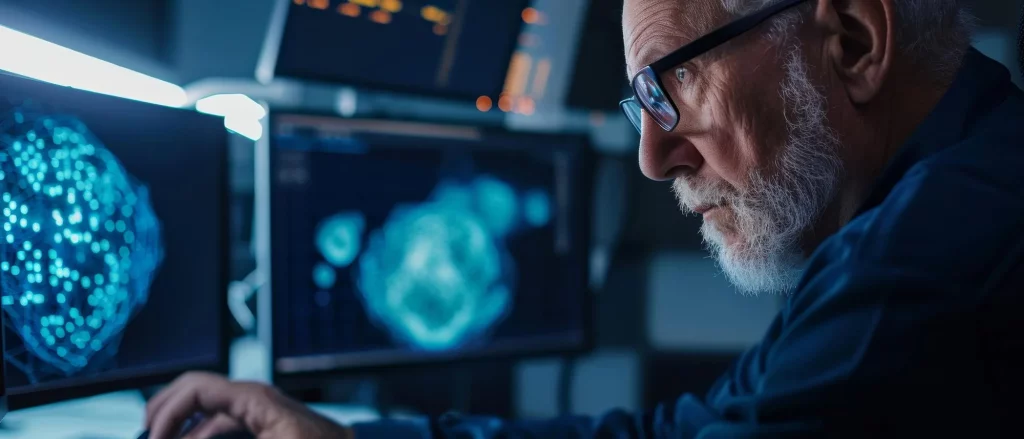
Neurosurgeons at Cedars-Sinai Medical Center are pioneering a groundbreaking study that adapts advanced ultraviolet camera technology, to enhance brain surgery.
Joint Chiefs of Staff General Mark A. Milley and US military personnel recognized for their leadership during the COVID-19 pandemic
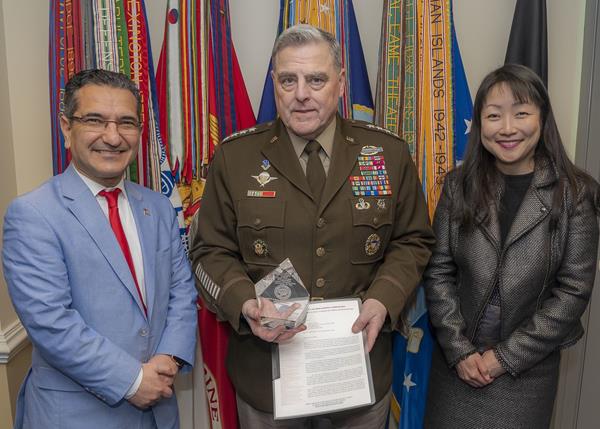
December 20, 2022 23:05 ET| Source: Society for Brain Mapping & Therapeutics WASHINGTON, Dec. 20, 2022 (GLOBE NEWSWIRE) — Pentagon: In the past three years, American military personnel has tirelessly defended and supported the country while themselves in danger of contracting COVID-19 and, sadly, in many cases losing their lives in the line of duty. Military families have also suffered throughout this pandemic. However, they supported the selfless act of their loved ones in the uniform who devoted their lives to protecting Americans from the complication of this devastating viral disease and helping with vaccinations and care of millions of their compatriots. Today at the Pentagon, US Military personnel and the 20th Joint Chiefs of Staff General Mark A. Milley were recognized by two non-profit organizations, Brain Mapping Foundation (BMF) and Society for Brain Mapping and Therapeutics (SBMT). Over two decades, BMF and SBMT have been at the forefront of providing access to cutting-edge care for veterans and wounded soldiers through pioneering medical innovation and neurotechnology research. “It is our honor to show our gratitude to US military personnel and their families and thank General Milley for his leadership during this brutal pandemic for their valor and bravery, which has been leading to saving millions of our compatriots,” said Dr. Babak Kateb, Founding Chairman of the Board and CEO of SBMT, and President of BMF. BMF and SBMT have been at the forefront of fast-tracking therapeutics and diagnostics; some of these are immunotherapy, stem cell therapy, AI-based robotics prosthetic devices, nanomedicine, neurophotonics, brain mapping and multi-spectral imaging for neurological spine and neuropsychiatric disorders such as PTSD, brain cancer, and spinal trauma, as well as suicide prevention, opioid addiction treatments, neuro-regeneration and rehabilitation. “We are here at the Pentagon in person to assure General Milley, the US military personnel, and our fellow Americans that we are relentlessly supporting our troops and working 24/7 to ensure they have access to the game-changing and cutting-edge therapeutics,” said Dr. Vicky Yamamoto, 20th President, Executive Director of SBMT, and chairwoman of the SBMT-COVID19 global task force. SBMT and BMF created a task force and tackled COVID-19 pandemic through science, technology, innovation, and policy, and endorsed California Proposition 14. SBMT was instrumental in the passage of Proposition 14, which provides $5.5B in total to continue stem cell research, including $1.5B for the support of research and development of treatments for neurological disorders. The BMF also donated PPE and food to the local hospitals and published a landmark review position paper on COVID-19 in the Journal of Alzheimer’s Disease warning about post-COVID-19 brain disorders. Drs. Vicky Yamamoto (20th President of SBMT-chairwoman of award committee), Babak Kateb (founding chairman and CEO of SBMT and President of BMF), Ret. Colonel Michael Roy (10th President of SBMT/Co-chair of military medicine subcommittee), Deborah Zelinsky (SBMT board; chair of visual processing subcommittee), Keerthy Sunder (SBMT Board, Co-chair of psychiatry and psychedelic subcommittees), where part of the selection committee and the award was presented by Drs. Babak Kateb and Vicky Yamamoto to General Milley on December 19th, 2022, at the Pentagon. The 2023 (20th) Annual World Congress of SBMT (Brain, Spine and Mental Health) is scheduled to be held at the LA Convention Center on Feb 16th-19th, 2023, with near 900 invited speakers covering the latest neurotech innovations for neurological disorders including Bioskills/cadaver labs: www.WorldBrainMapping.org and the 20th Gathering for Cure Gala of Brain Mapping Foundation is scheduled to be held at Intercontinental Hotel on Friday, February 17th, 2023: https://www.worldbrainmapping.org/Annual-Awards-Gala/ About SBMT: The Society for Brain Mapping and Therapeutics (SBMT) is a non-profit society organized to encourage basic and clinical scientists interested in brain mapping, engineering, stem cell, nanotechnology, imaging, and medical devices to improve the diagnosis, treatment, and rehabilitation of patients afflicted with neurological disorders. This Society promotes public welfare and improves patient care by translating new technologies/therapies into lifesaving diagnostic and therapeutic procedures. SBMT is committed to excellence in education and scientific discovery. The Society achieves its mission through multidisciplinary collaborations with government agencies, patient advocacy groups, educational institutes, and industry, as well as a philanthropic organization: www.WorldBrainMapping.org About BMF: The Brain Mapping Foundation (BMF) is a non-profit 501c3 charitable organization established to facilitate multidisciplinary brain and spinal cord research and expedite the integration and translation of cutting-edge technologies into neuroscience. BMF is focused on translating state-of-the-art technologies from the space and defense industries into neuroscience to bring the most advanced medicine to wounded warriors as well as civilians: https://www.worldbrainmapping.org/Annual-Awards-Gala/ Media Contact: Dr. Joe F. BolanosSociety for Brain Mapping and TherapeuticsCOOCell: 661-607-5607Office: 310-500-6196Joe.Bolanos@brainmappingfoundation.org | www.worldbrainmapping.org Jessica Kopach-PaulsonP2R Inc.Email: jessi@p2rinc.comW: P2Rinc.com A photo accompanying this announcement is available at https://www.globenewswire.com/NewsRoom/AttachmentNg/42ad1a3a-f305-4ef8-943c-b331d5c06705
20th Annual “Gathering for Cure” Awards Gala of World Brain Mapping Foundation to recognize Pioneering Innovation, Technology, Policy, Humanitarian and Philanthropic work
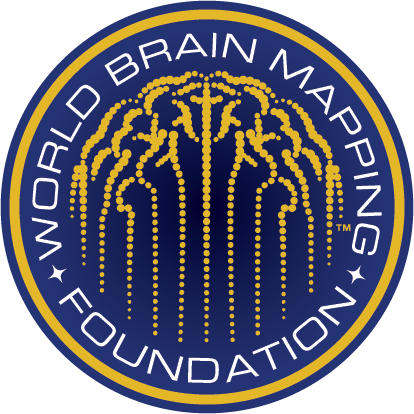
Society for Brain Mapping & Therapeutics November 21, 2022·4 min read Tickets Now Available for the Star Studded Black-Tie Event hosted by Gabriella Wright and Dr. Babak Kateb with Special Guest Dr. Deepak Chopra LOS ANGELES, Nov. 21, 2022 (GLOBE NEWSWIRE) — Ticket registration is now open for the World Brain Mapping Foundation’s (WBMF) 20th Annual “Gathering for Cure” Awards Gala, taking place on Friday, February 17th, 2023, at the InterContinental Hotel in downtown Los Angeles. The Gala includes a cocktail/red carpet reception from 6-8pm, followed by a black-tie award banquet from 8-11pm and is part of the Annual World Congress of the Society for Brain Mapping and Therapeutics (SBMT), SBMT 2023 takes place from February 16th-19th at the Los Angeles Convention Center. For over 20 years, these two world-class scientific events have brought physicians, scientists, policymakers, funding agencies, and industry leaders together to advance applications in brain and spinal cord mapping and surgical and non-surgical image-guided therapies. Every year, the WBMF recognizes inspiring pioneers in the field, including scientific trailblazers, leading policymakers, technology developers, and individuals who helped to raise awareness about brain mapping, neurological disorders, mental health, and spinal disorders. “The Gala is the ‘Oscars of Neuroscience’,” says SBMT founder and WBMF President Dr. Babak Kateb. “This is a chance to celebrate pioneering work in our field while raising funding for our Brain technology and Innovation Park (BTIP), Neuroscience20, National Center for Nano-Bio-Electronics, Veterans and Wounded Soldiers and Ukraine Medical Humanitarian initiatives.” SBMT and WBMF work hand-to-hand to break boundaries, science, technology, medicine, art and healthcare policy by promoting innovative legislations and game-changing neurotech innovation and research that support rapid, safe, and cost-effective translation of new technologies into diagnostic and therapeutic applications. Every year, gala sponsors, partners (NIH, NASA, etc.), and donors gather during the convention for an evening of celebration to honor pioneering achievements. The event also builds crucial financial support for neurotech innovation and research that directly improves health outcomes for hundreds of millions of patients including veterans with neuro-psychiatric disorders such as: Alzheimer’s Disease (AD), ALS, brain cancer, chronic pain, depression, epilepsy neurotrauma (brain and spine), Multiple Sclerosis (MS), PTSD, Parkinson’s Disease (PD), suicide, and stroke (to name a few). Distinguished guests and past year’s awardees Dr. Deepak Chopra and Mr. Montel Williams are amongst celebrities who will be attending. Oscar and Golden Globe award recipient actress Goldie Hawn will attend and receive the 2023 Beacon of Courage and Dedication award. Previous recipients of this prestigious award include Professor Stephen Hawking (2015), and Harrison Ford (2021). Dr. Katrin Amunts is one of the recipients of the 2023 Pioneer in Medicine award. The Philips Healthcare Foundation will receive the 2023 Humanitarian award for its work in Ukraine. Past award recipients include Sanjay Gupta (Humanitarian 2021), and Anthony Fauci (Humanitarian 2021). Doctors Rajagopal Keerthy Sunder (SBMT board member), Brian Norling, and Chris Wheeler (SBMT board member) will receive the Golden Axon award; and SBMT fellows Drs. Natalya Fedorchenko, Kateryna Potapova, James Okereke, and Josthna Bodhanapati the Student Service and Leadership award. All Gala tickets (considered charitable donations) are tax deductible. Attendees, sponsors, and partners are invited to choose from special support packages such as: Join us for this exciting event aimed at raising funding and awareness to combat neuro-psychiatric disorders impacting veterans and the general public while supporting brain mapping research through generous individual philanthropic donations and corporate sponsorship. Live music, exciting auction items, and star studded entertainment will be part of this magnificent program. About the Brain Mapping Foundation: Brain Mapping Foundation (BMF) is a 501c3 charity focused on translating state-of-the-art technologies from the Space and defense industries into neuroscience to bring the most advanced medicine to wounded warriors and civilians. Founded in 2004 by Dr. Babak Kateb, the organization facilitates multidisciplinary neurology, neurosurgery, psychiatry, neuroscience, spine, mental health, neuroengineering and spinal cord research, along with expediting the integration and translation of cutting-edge technologies into the field of neuroscience. Learn more information on past award recipients, please visit: https://www.worldbrainmapping.org/Annual-Awards-Gala/ Media Contact:Tracy KeyserP2R Inc.Tracy@tracykeyser.com
Forum N20, ahli syaraf diskusi soal biaya tinggi pengobatan neurologi
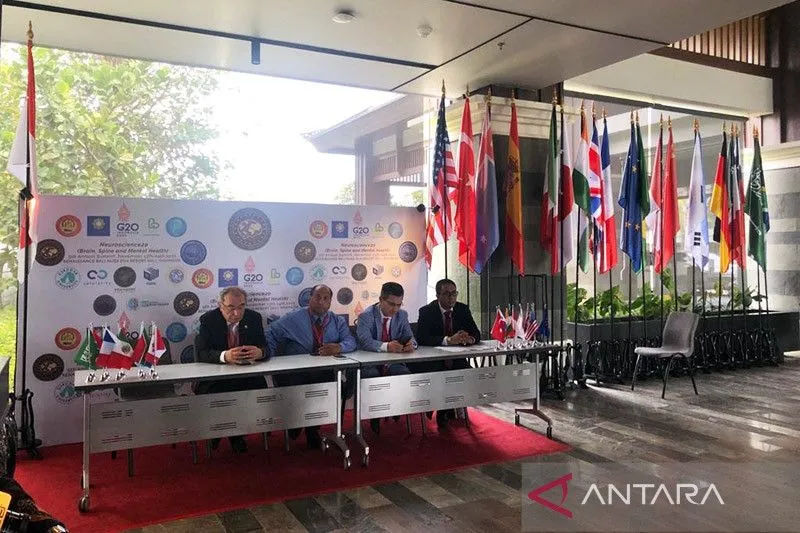
Forum N20, ahli syaraf diskusi soal biaya tinggi pengobatan neurologi https://www.antaranews.com/berita/3240633/forum-n20-ahli-syaraf-diskusi-soal-biaya-tinggi-pengobatan-neurologi
9th Annual “N20” Neuroscience20 (Brain, Spine, and Mental Health) Summit to Shed Light On $16T+ Global Cost of Neuro-psychiatric Disorders
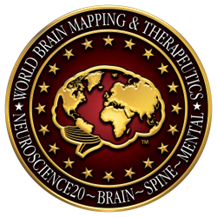
LOS ANGELES, Nov. 10, 2022 (GLOBE NEWSWIRE) — Launched nine years ago, Neuroscience20 (N20) educates global leaders and Group of Twenty (G20) leaders about the cost of neurological, spine, and mental disorders. Neurological disorders significantly impact the world’s economy due to their often chronic and life-threatening nature, creating a global disease burden. G20 member nations, representing the most significant economies globally, are invited to come together to formulate a plan to overcome this burden. The N20 – an initiative of the Society for Brain Mapping and Therapeutics (SBMT) – is at the forefront of this worldwide collaboration to comprehensively raise awareness about brain, spine, and mental disorders. “We studied the cost of neuro-psychiatric and spine disorders to the world economy, and it took us almost a year to compile the data. We discovered a total cost of over $16T annually to the world economy and $1.5T to the US economy. We published these findings in the Journal of Alzheimer’s Disease,” shares Dr. Vicky Yamamoto, co-author of the paper, 20th President of SBMT and Cancer scientist at USC-Keck School of Medicine and USC-Norris Comprehensive Cancer Center. This year’s N20 scientific and policy program includes speakers from across Indonesia and other G20 countries, as well as five keynotes: Drs. Ali Gufran Mukti, Robert Hariri, Vicky Yamamoto, Keerthy Sunder, and Jose Edgardo Valerio Pascua. The summit covers neurotech innovation in cellular therapeutics/immunotherapy; nanomedicine/nanoneurosurgery; AI machine learning; diagnostic, prognostic, and predictive modeling; neurotrauma; the Cancer Moonshot Initiative; suicide prevention; opioid addiction; epilepsy; radiosurgery; pain management; COVID-19 brain; rehabilitation; neurodegenerative disorders; neurovascular disorders; neuro-psychiatric disorders; and spine disorders. “We are truly honored to bring such a world-class scientific and global policy think tank to Indonesia. We urge Indonesian and Indian (2023 presidency of G20) sherpas to include the expansion of N20 – as well as addressing the cost of neuro-psychiatric disorders to the world economy – in the communique of the G20 as a whole,” says Dr. Asra Al-Fauzi, Professor of Neurosurgery, Chief of Neurovascular and Neuro-endovascular Therapy Center, Airlangga University and President of N20 Indonesia. US, European, Middle East and Balkans (ME+), Latin American (LA), and Asia Pacific (AP) Brain Initiatives will also be represented. In addition, the program will include a panel on the Global Medical Donor Summit for Ukraine as a part of the humanitarian mission of SBMT. “Through Neuroscience20, SBMT offers an open platform for international cooperation and partnership across G20 nations, which comprise the largest economies in the world. We are responding to our discovery of a lack of effective collaboration between nations and a lack of resources in developing countries. Current statistical analyses on the cost of neurological disorders to the world economy strongly suggest a great need for investment in neurotechnology and innovation or fast-tracking therapeutics and diagnostics to curb these costs. During the current COVID-19 pandemic, SBMT – through this summit and our publications – intends to showcase the importance of worldwide collaboration to reduce the population’s economic and health burden, specifically regarding neurological/brain, spine, and mental disorders,” explains Dr. Babak Kateb, Chairman of SBMT, President of the World Brain Mapping Foundation (WBMF), Director of the National Center for NanoBioElectronics, and Director of Brain Technology and Innovation (BTIP). This program is made possible by the generous contributions of: About SBMT: www.WorldBrainMapping.Org Contact information: Director of Public Relations at SBMT Jessca Kopach jessi@p2rinc.com Phone: 805-570-2599
Üsküdarlı Araştırmacılar Endonezya G20/N20 Zirvesinde…
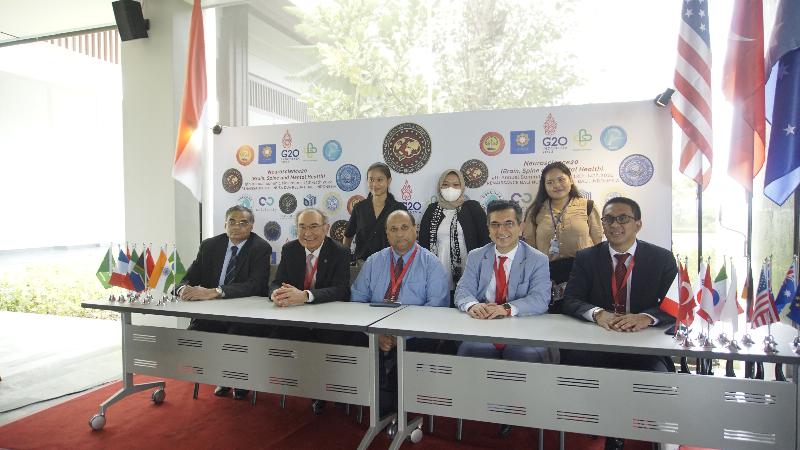
Sinirbilim alanında küresel ölçekte seçkin bilim insanlarının yer aldığı Beyin Haritalama ve Tedavileri Derneği (Society for Brain Mapping and Therapeutics – SBMT) tarafından düzenlenen G20 – Neuroscience20 (BRAIN- SPINE- MENTAL- HEALTH) zirvesinin 9’uncusu Endonezya / Bali’de yapıldı. Üniversite olarak Türkiye’den tek Üsküdar Üniversitesinin katılım sağladığı Zirvede Prof. Dr. Nevzat Tarhan açılış konuşması gerçekleştirdi. Nöroteknoloji odaklı çalışmalarıyla uluslararası araştırmacılarca ilgi görmenin ve referans adres olmanın kendilerini mutlu ettiğini belirten Tarhan’a Endonezya’da bestseller listesine giren kitapları dolayısıyla “Bestseller” ödülü de takdim edildi. Türkiye’den iki bilim insanı… Konferansa Türkiye’den tek katılım sağlayan üniversite Üsküdar Üniversitesi olurken Kurucu Rektör Prof. Dr. Nevzat Tarhan ve beraberindeki araştırmacılardan Üsküdar Üniversitesi Öğretim Üyesi Doç. Dr. Türker Tekin Ergüzel yürüttükleri çalışmalara ilişkin zirve kapsamında sunum gerçekleştirdi. Bilim liderlerinin gündeminde kanser, nöroteknoloji var… Prof. Dr. Nevzat Tarhan başkanlığında ME+ Brain Initiative, Societyfor Brain Mapping and Therapeutics (SBMT) adına Dr. Babak Kateb, Hindistan Brain Initiative adına Sandip Chatterjee, Asia – Pasific adına Dr. Asra Al Fauzi ve Sunder Vakfı Başkanı Keerthy Sunder zirve kapsamında N20’de açılış konuşmaları gerçekleştirdi. Bilim insanlarının gündeminde ise; Kanser Tedavisi, İntihar Önleme, Nöroteknoloji, Bağımlılık Önleme ve Giyilebilir Teknolojiler başlıkları vardı. Türkiye’de yürütülen çalışmalar dikkat çekti… Dünya basınında da geniş yer bulan zirve kapsamında “Theta Burst and Neuromodulation Applications” başlıklı sunumuyla oturum başkanı Prof. Nevzat Tarhan ve “AI Based Neuroscience Applications and NP Model” sunumuyla Doç. Dr. Türker Tekin Ergüzel çalışmalarını paylaştı. Nöroteknoloji odaklı çalışmaları uluslararası araştırmacıların ilgisini çekerken Prof. Nevzat Tarhan sunumunda nöromodülasyon tekniklerini, rTMS’in elektriksel aktiviteyi nasıl etkilediğine dikkat çekti. Tarhan, depresyon, OKB tedavisinde ve komorbid psikiyatrik hastalıklarda kullanımını, yan etkilerini ele aldı. NP Beyin Hastanesinin bağımlılık, rTMS theta burst protokollerini ve nöronavigasyon destekli tedavi uygulamalarını 9 farklı ülkeden araştırmacılar ve eş zamanlı olarak Society for Brain Mapping and Therapeutics (SBMT) Youtube kanalı üzerinden olarak izleyicileri ile paylaştı. Yapay Zeka destekli hastalık sınıflandırma modeli… Öte yandan Doç. Dr. Türker Ergüzel de NP Beyin Hastanesi için tasarlanan ve Prof. Nevzat Tarhan tarafından patent başvurusu yapılan Yapay Zeka destekli hastalık sınıflandırma modelinin ilk versiyonu “NP Model” sunumunu gerçekleştirdi. Özellikle artan veri çözünürlüğü ve boyutu ile birlikte yetersiz kalan geleneksel sınıflandırma algoritmaları yerine kullanılan LSTM, CNN mimarileri ile tasarlanan hastalık sınıflandırma modeli OKB – Sağlıklı Kontrol grubu için ve Bipolar – Sağlıklı Kontrol grupları için external validation işlemleri ile simüle edilerek araştırmacılar ile paylaşıldı. Tarhan: “Çalışmalarımızla ülkemizde referans adres olmak bizi mutlu ediyor” Üsküdar Üniversitesi ve NP Beyin Hastanesinin Nöroteknoloji odaklı çalışmalarının uluslararası araştırmacılar tarafından yakın ilgi görmesinin kendilerini çok mutlu ettiğini, ülkemizin bu alanlardaki çalışmalarının referans adres olmaktan ise mutluluk duyduklarını belirten Tarhan’a bir de ödül takdim edildi. Yazar Prof. Dr. Nevzat Tarhan’a Bestseller ödülü verildi “Rumi Terapi” ve “İnanç Psikolojisi” kitapları Endonezya’da “Bestseller” listesine giren Tarhan’a “Bestseller” ödülü takdim edildi. Tarhan’a ödülünü G20 / N20 zirvesinde “Indonesian Neurosurgical Society” başkanı Joni Wahyuhadi tarafından verildi. Okurları tarafından “Bilim ve inancı birlikte harmanlanmasına dair etkileyici bir kitap” olarak değerlendirilen Tarhan’ın kitapları N20 delegasyon üyelerine Prof. Dr. Nevzat Tarhan’ın imzası ile paylaşıldı. * Zirveye ilişkin bilgilendirme sunumuna ulaşmak için tıklayınız. Üsküdar Haber Ajansı (ÜHA)
